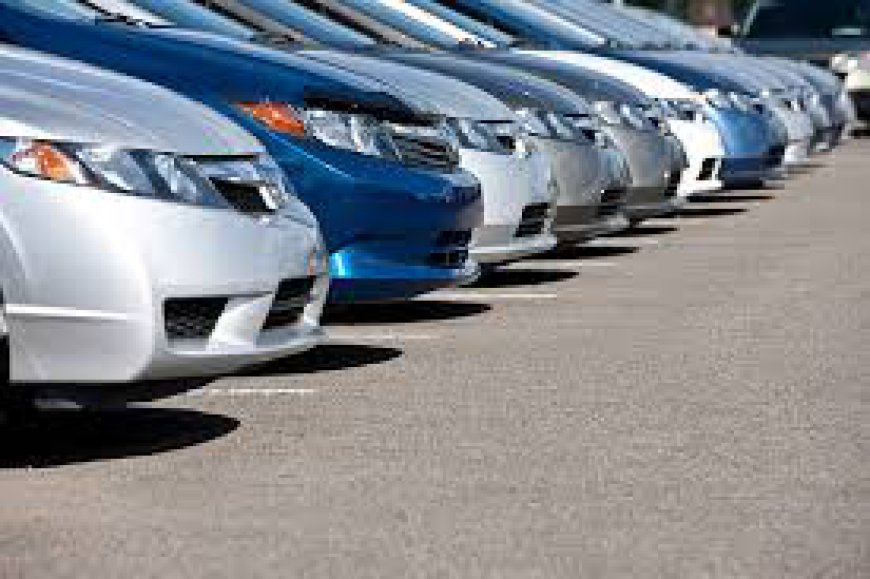How to Budget for New Car Prices in Pakistan

Buying a new car in Pakistan is an exciting yet significant financial decision, especially given the rising car prices due to inflation, import duties, and fluctuating exchange rates. Whether you’re planning to purchase a car for the first time or upgrade your current vehicle, creating a budget is crucial to ensure you don’t overextend your finances. Here’s a step-by-step guide on how to budget for new car prices in Pakistan.
1. Assess Your Financial Situation
Before jumping into the car market, take a close look at your current financial situation. This includes understanding your income, savings, and other financial commitments.
-
Income: Calculate your monthly or annual income and determine how much of it you can realistically allocate for a car without affecting other essential expenses.
-
Savings: If you plan to buy the car outright, evaluate your savings and see how much you can put down upfront.
-
Existing Expenses: Consider your regular expenses like rent, utilities, groceries, and any loan payments you might already have. Experts recommend that car-related expenses should not exceed 15-20% of your monthly income.
2. Research Car Prices
Car prices in Pakistan vary significantly depending on the brand, model, and whether the car is locally assembled or imported. To get a realistic sense of the prices, visit official websites of car manufacturers, check local dealership prices, or browse online car platforms like PakWheels or OLX.
Factors that influence new car prices include:
-
Brand and Model: Popular brands like Suzuki, Toyota, and Honda generally have higher prices, with some models being more affordable than others.
-
Imported vs. Locally Manufactured: Imported cars are usually more expensive due to high import duties and taxes. Locally manufactured cars like the Suzuki Alto or Toyota Yaris may be more affordable.
-
Trim Levels: Higher trim levels with additional features such as upgraded interiors, automatic transmissions, and enhanced safety systems will add to the car’s base price.
3. Account for Additional Costs
When budgeting for a new car, you need to consider costs beyond the sticker price. These hidden costs can quickly add up, making the overall expense higher than anticipated.
-
Taxes and Registration Fees: These can vary depending on the car's value, engine capacity, and province. New cars typically have higher registration fees than used ones.
-
Insurance: Comprehensive car insurance is recommended to protect your investment. The premium varies based on the car's model, value, and the coverage plan.
-
Fuel and Maintenance Costs: The type of car you buy affects fuel efficiency and maintenance costs. Some cars, especially luxury models, require more expensive parts and regular servicing.
-
Depreciation: New cars lose value quickly, and understanding depreciation can help you gauge the long-term financial commitment.
4. Decide on a Payment Method
There are two main payment options for buying a new car: paying upfront or opting for car financing.
-
Upfront Payment: If you have enough savings, paying the full amount upfront means you avoid interest charges and financing fees. This option also gives you more negotiating power when buying from a dealership.
-
Car Financing: If paying upfront is not feasible, you can opt for car financing through banks or financial institutions. Many banks in Pakistan offer car loans, with varying interest rates and loan terms (usually 3-5 years).
-
Down Payment: This is typically 20-30% of the car’s total price.
-
Monthly Payments: Calculate the monthly payments based on the loan amount, interest rate, and repayment period. It’s essential to choose a plan that doesn’t strain your budget.
5. Save for a Down Payment
If you’re planning to finance your new car, it’s a good idea to save for a substantial down payment. The larger the down payment, the less you need to borrow, which reduces your overall loan cost and monthly installments. Aim to save at least 20-30% of the car’s total cost for the down payment.
6. Consider Resale Value
Some car brands and models hold their value better than others in Pakistan, making them a better long-term investment. Cars like the Toyota Corolla, Honda Civic, and Suzuki Alto tend to have higher resale values. If you plan to sell the car in the future, consider its potential resale value when making your purchase decision.
7. Look for Discounts and Promotions
Throughout the year, many car dealers and manufacturers offer promotions, especially during festive seasons like Eid or end-of-year sales. Keep an eye out for such offers to get a better deal. Online platforms like PakWheels or CarFirst may also feature discounts or trade-in deals that can help reduce your overall cost.
8. Evaluate Long-Term Ownership Costs
The cost of owning a car goes beyond just buying it. Make sure to budget for the following long-term expenses:
-
Fuel: Consider how much you’ll be spending on fuel based on the car’s fuel efficiency.
-
Maintenance: Set aside a budget for routine maintenance like oil changes, tire replacements, and other repairs.
-
Insurance Renewals: You’ll need to renew your car insurance every year, and premiums may increase over time.
Conclusion
Budgeting for a new car in Pakistan requires careful consideration of your financial situation, car prices, and additional costs such as taxes, insurance, and maintenance. Whether you pay upfront or finance your purchase, having a clear understanding of your expenses will help you make a smart, informed decision. By doing thorough research, saving for a down payment, and keeping long-term costs in mind, you can drive home your dream car without straining your finances.

 muslim
muslim